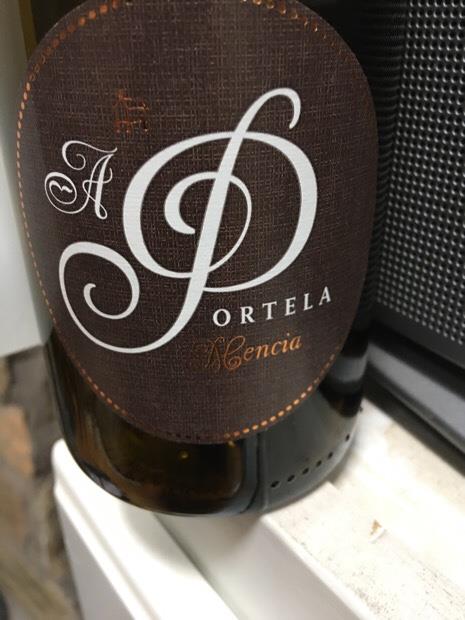
External search
Google (images)
Wine Advocate
Wine Spectator
Burghound
Wine-Searcher
Vintages
2017
2016
2015
2014
2013
2012
2011
2010
From this producer
Show all wines
All tasting notes
|
| Drinking Windows and Values |
| Drinking window: Drink between 2016 and 2020 (based on 16 user opinions) |
| Community Tasting History |
| Community Tasting Notes (average 85.7 pts. and median of 86 pts. in 5 notes) - hiding notes with no text | | | Tasted by Viinigubbe on 2/2/2017 & rated 87 points: Good basic wine. Touch of hera and milky smooth. I like it, kindy samethic texture. Nothing extraordinary but basics are fine! (1386 views) | | | Tasted by lovanc@outlook.com on 1/1/2015: This wine is worth a try just due to the unusual flavor profile. Very earthy / barnyardy. Starts off a bit alcoholic however that blows off after an hour of decanting. (32 views) | | | Tasted by Endodr on 10/30/2014 & rated 84 points: (Spanish Tasting at Vino, Hollywood, Florida) This unoaked Mencia has a beautiful ruby red color and a nose of wet earth, florals, and ripe berries. It tastes of black cherries, dark berries, spice, and cracked pepper. Unfortunately, there is a sharp edge; almost a bitterness that you can taste and feel on your tongue, that is very distracting and unpleasant. This takes away from it's otherwise positive attributes, it's rich fruit and spiciness. The wine is medium bodied with a moderate ending. (2645 views) | | | Tasted by BMG Wine on 10/25/2013: Think I'm just not a fan of Mencia. (2984 views) |
| Compania de Vinos del Atlantico Producer websiteMencíaMencia is grown in the Northwestern region of Spain near the borders of Galicia, Leon, and Zamora. Mencia produces fruity wines of great color, acidity and aging potential. It is sweet and aromatic, with a good dose of alcohol. The vines produce medium-sized clusters and fruit.
The reds made from Mencia have a characteristic velvety palate. Traditional reds are pale, fragrant and light wines. Modern winemakers are creating bolder reds, of higher concentration, expressing Mencia’s aromas and freshness. Many wineries are taking advantage of the variety ability to aging.
Rose wines are aromatic and fruity, lively, light and soft.Spain Vinos de España - Wines of Spain (Instituto Español de Comercio Exterior) | Wikipedia
Wine Map on weinlagen-info
Spain is the third largest wine producing nation in the world, occupying the majority of the Iberian Peninsula with vast diversity in climate, culture, and of course, wine. From inky, dark reds of the [Priorat] to dry, white Finos from Andalusia, Spain can easily boast of elaborating a wide variety of notable styles. Within Spain there are currently 62 demarcated wine regions, of which a handful have gained international recognition: [Rioja], Priorat and [Ribera del Duero]. Yet these regions are only a small sample of the high quality wines Spain produces. Regions such as Cava, Penedes, Somontano, Galicia, Rueda and Jerez are only a few of the numerous regions worthy of exploration throughout Spain. Spain can also lay claim to having the most land under vine in the world, growing up to, by some accounts, 600 indigenous varietals of which Tempranillo is their most well known. Other popular varietals include [Garnacha], Bobal and Monastrell for reds and for whites; the infamous [sic] Palomino Fino grape which is used in the production of sherry wine, Pedro Ximenez in Montilla Morilles, Albarino used in the creation of the bright, effervescent wines of Galicia, and Verdejo in Rueda. - Source: - Catavino.net
Spain is not in the forefront of winemaking for its dessert wines, other than for its sweet wines from Sherry country including the highly revered Olorosos (when sweetened). But apart from Sherry Spain has a range of styles of dessert wines, ranging from the those made from the Pedro Ximenez grape primarily in Jerez and Montilla-Moriles) to luscious, red dessert wines made in the Mediterranean from the Garnacha (Grenache) grape. Some good Moscatels are made in Mallorca, Alicante and Navarre. The northwest corner of Spain, Galicia, with its bitter Atlantic climate, is even making dessert wines, called “Tostadillos” in the village of Ribadivia (similar to France’s “Vin de Paille”). The Canary Islands have made interesting dessert wines for centuries (they are mentioned by Shakespeare, for example) and in recent years the quality of winemaking has been improved and the Canary Islands wines are being better marketed now. The winemaking styles for “Vinos Dulces” are also diverse, from “Late Harvest” (Vendimia Tardía) to “Fortified Wines” (Fermentación Parcial). Based on in-spain.info.GaliciaGalicia is an autonomous region in the northwestern corner of Spain, north of Portugal. It is marked by an atlantic climate with frequent rain and moderate temperatures, especially along the coastal regions. There are five Denominación de Origen (DO) areas: Monterrei, Rías Baixas, Ribeira Sacra, Ribeiro and Valdeorras. Probably the best known wines are the Albariño wines from Rias Baixas, but all regions have seen increased interest in recent years. There has been also a notable resurgence of local grapes, like Godello, Treixadura or Loureiro.
ValdeorrasValdeorras (Valley of Gold) is the easternmost wine region of Galicia, with wineyards on the banks of the river Sil in the southern part of the Ourense province. The climate is a mix of atlantic and continental with high rainfall, but warm summers. Godello, an indigenous grape, is becoming important again. Other white grapes are Palomino, Valenciana and Lado. Mencía, Garnacha Tintorera, Gran Negro and Merenzao are in use as red grapes.
Map on weinlagen-info |
|




